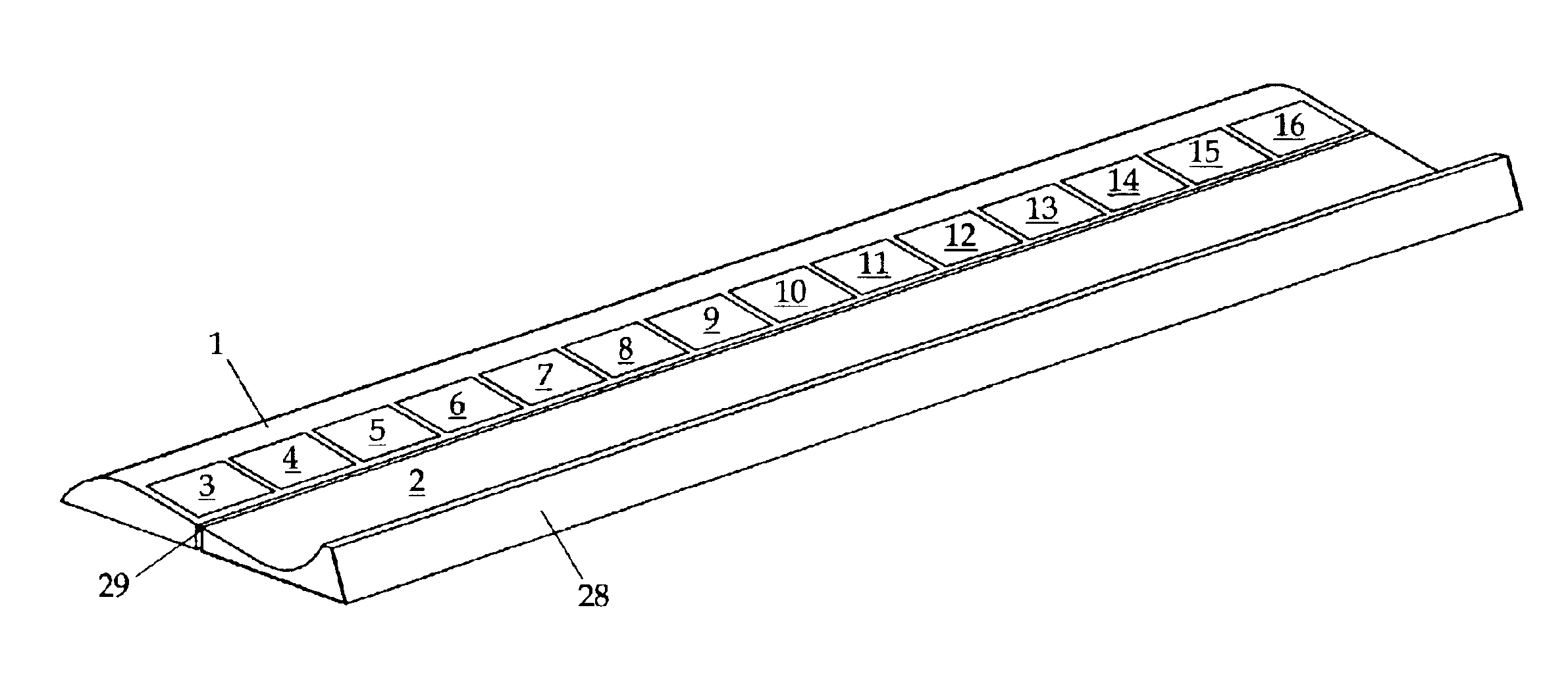Compact keyboard with sliding motion key actuation
a keyboard and sliding motion technology, applied in the field of compact, collapsible keyboards, can solve the problems of large surface area on which to rest, limited potential size reduction, and quadrupling the thickness of the keyboard when folded, and achieve the effect of reducing mechanical number, reducing the number of mechanical keys, and reducing the number of capacitance-responsive surfaces
- Summary
- Abstract
- Description
- Claims
- Application Information
AI Technical Summary
Benefits of technology
Problems solved by technology
Method used
Image
Examples
Embodiment Construction
In FIG. 1, there is shown a perspective view of the keyboard showing the arrangement of the rows of capacitance-responsive key switches 1, 2, and 28 and the single row of mechanical, depressible key switches 3-16. Number 1 is the row of capacitance-responsive surfaces that provide key switches for actuating characters and commands assigned to spaces in the uppermost row of the keyboard. Numbers 3-16 are the mechanical, depressible key switches for actuating characters and commands assigned to spaces in the home row of the keyboard. The home row retains mechanical, depressible key switches 3-16 in order to provide standard rest positions for the fingers. Number 2 is the row of capacitance-responsive surfaces that provide key switches for actuating characters and commands assigned to spaces in the row below the home row. Number 28 is the row of capacitance-responsive surfaces that provide key switches for actuating the space-bar and assorted computer commands.
This keyboard is particul...
PUM
 Login to View More
Login to View More Abstract
Description
Claims
Application Information
 Login to View More
Login to View More - Generate Ideas
- Intellectual Property
- Life Sciences
- Materials
- Tech Scout
- Unparalleled Data Quality
- Higher Quality Content
- 60% Fewer Hallucinations
Browse by: Latest US Patents, China's latest patents, Technical Efficacy Thesaurus, Application Domain, Technology Topic, Popular Technical Reports.
© 2025 PatSnap. All rights reserved.Legal|Privacy policy|Modern Slavery Act Transparency Statement|Sitemap|About US| Contact US: help@patsnap.com



